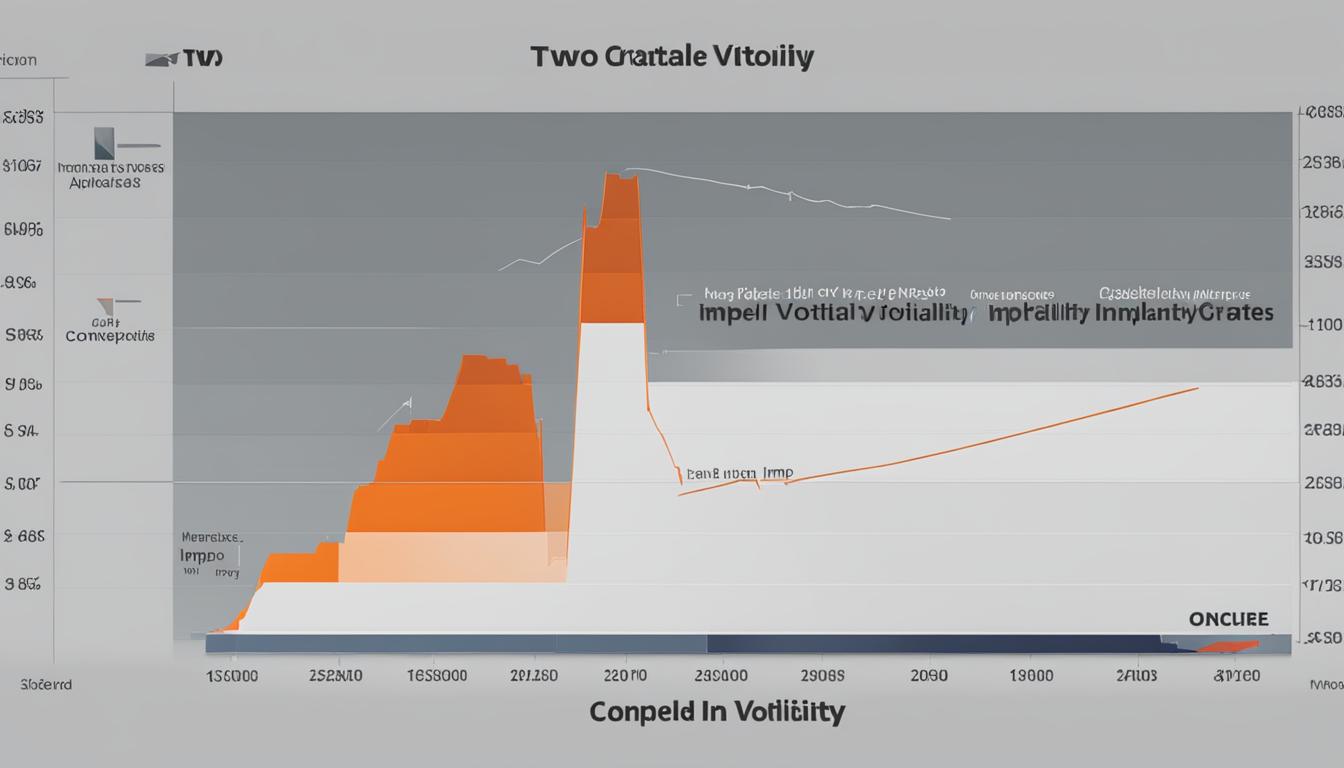Trading Weekly Options: Strategies and Risks

Introduction
Trading weekly options has become an essential part of the trading world, especially for medium experienced and advanced traders. Weekly options, which expire in a shorter time frame, offer unique opportunities for short-term trading and allow for precise targeting of market movements.
In this article, we will discuss:
- Understanding the differences between weekly and monthly options: Learn how these two types of options differ and how it affects your trading strategy.
- Exploring advanced strategies: Discover specific strategies like Iron Condors, Straddles, Credit Spreads, and Calendar Spreads that can be used to take advantage of market conditions.
- Managing risks effectively: Find out ways to reduce the risks that come with the volatility and quick price changes that are common in weekly options.
For those interested in learning more about intraday options trading strategies, check out Mastering Intraday Options Trading: Strategies, Considerations, and Best Practices. Additionally, explore advanced strategies such as the Call Ratio Spread or discover the Options Momentum Strategy to enhance your trading skills.
Understanding Weekly Options
Definition and History
Weekly options are short-term financial instruments that expire every Friday, providing traders with frequent opportunities to capitalize on specific market events. Introduced by the Chicago Board Options Exchange (CBOE) in 2005, these options have gained popularity due to their flexibility and potential for high returns. The CBOE’s introduction of weekly options significantly impacted the trading landscape by enhancing liquidity and allowing traders to implement more targeted strategies.
Role of CBOE and Market Impact

The CBOE played a pivotal role in the rise of weekly options. By offering these instruments, the exchange increased market liquidity, making it easier for traders to enter and exit positions. The frequent expiration dates also created numerous trading opportunities, aligning perfectly with events like earnings releases and economic announcements. This innovation has helped traders manage risk more effectively while taking advantage of short-term market movements.
Comparison with Traditional Options
Weekly options differ from traditional monthly options in several key ways:
- Shorter Expiration: Weekly options expire every Friday, compared to monthly options that typically expire on the third Friday of each month. This shorter duration means that weekly options are more sensitive to immediate market conditions.
- Lower Premiums: Due to their brief lifespan, weekly options generally have lower premiums than monthly options. This makes them a cost-effective choice for traders looking to hedge or speculate with less capital outlay.
- Higher Gamma and Time Decay: Weekly options exhibit higher gamma, meaning their delta can change rapidly. They also experience accelerated time decay, which requires traders to be vigilant about timing their trades.
These characteristics make weekly options particularly appealing for seasoned traders who are adept at navigating volatile markets and employing advanced strategies.
For more on managing risks associated with such dynamic instruments, you might find this resource useful.
Understanding implied volatility is crucial when trading weekly options. Discover more about it here.
Learn how to adapt your strategies in response to market reversals here.
Benefits and Risks of Trading Weekly Options
Advantages of Weekly Options
1. High Liquidity and Frequent Trading Opportunities
Weekly options attract considerable trading volumes due to their short expiration periods. This high liquidity ensures that you can enter and exit positions with minimal slippage. Frequent trading opportunities arise from the ability to focus on specific market events such as earnings releases or economic data announcements, allowing for tactical moves within a concise timeframe.
2. Lower Premiums
One significant advantage of weekly options is their lower premiums compared to monthly options. The brief duration until expiration means that you pay less to control the same amount of underlying assets. This cost-effectiveness enhances your ability to hedge positions and potentially achieve higher returns without substantial upfront costs.
Risks Associated with Weekly Options
1. Heightened Volatility
The shorter lifespan of weekly options often leads to increased volatility. Rapid price changes can either work in your favor or against you, necessitating constant monitoring of your positions. High volatility may amplify gains but also poses a risk to profitability if the market moves unfavorably.
2. Impact of Time Decay
Time decay, or theta, plays a crucial role in weekly options. As expiration approaches, the value of the option erodes more quickly than it does for longer-dated options. This rapid time decay requires precise timing when executing strategies to maximize potential returns while managing risks effectively.
Examining Risk Profiles for Advanced Strategies
Weekly options are not just about quick trades; advanced strategies like Iron Condors, Straddles, Credit Spreads, and Calendar Spreads rely heavily on understanding these nuanced elements:
- Iron Condors: Focus on stable markets where you can profit from minimal movement while controlling risk.
- Straddles: Capitalize on significant price swings during major events like earnings releases.
- Credit Spreads: Balance limited risk exposure with profit potential in relatively stable markets.
- Calendar Spreads: Exploit shifts in implied volatility over different timeframes to benefit from time decay effects.
Exploring these strategies necessitates a deep understanding of market conditions and timing, emphasizing the importance of integrating technical analysis tools within your trading workflow. For more insights into hedging capabilities, you might find this resource on Covered Call Strategy useful.
Understanding the balance between liquidity, lower premiums, heightened volatility, and time decay is vital when trading weekly options. These elements shape your strategies and risk management approaches, making it essential to stay informed and adapt swiftly to market dynamics.
For those interested in neutral strategies that perform well in various market conditions, this guide on Neutral Options Strategies could offer valuable insights.
Advanced Strategies for Trading Weekly Options
1. Weekly Iron Condors: A Comprehensive Approach to Risk Management
Strategy Mechanics and Setup
Weekly Iron Condors are an advanced strategy that combines a bear call spread and a bull put spread. This setup involves:
- Selling an out-of-the-money call option
- Buying a further out-of-the-money call option
- Selling an out-of-the-money put option
- Buying a further out-of-the-money put option
The goal is to capitalize on minimal price movement, collecting premiums from both spreads while limiting risk through the purchased options.
Implementing Effective Risk Control Measures
To effectively manage risk, consider the following:
- Position Sizing: Allocate only a small percentage of your portfolio to each Iron Condor position to mitigate potential losses.
- Adjustments: If the underlying asset moves unexpectedly, adjustments such as rolling the spreads or closing one side can help manage risk.
- Expiration Dates: Use weekly expirations to take advantage of rapid time decay, but be prepared for increased volatility.

Ideal Market Conditions for Successful Execution
Iron Condors thrive in stable markets with low volatility. Look for assets that exhibit:
- Minimal price fluctuations
- Historical patterns of trading within a specific range
- Low implied volatility
By identifying these conditions, you increase the likelihood of the underlying asset remaining within the profitable range of your Iron Condor.
For more on advanced strategies, explore Iron Butterfly: An Advanced Options Strategy.
2. Weekly Straddles: Capitalizing on Significant Price Volatility Events like Earnings Announcements
Straddles involve buying both a call and a put option at the same strike price and expiration date. They are particularly effective around significant events such as earnings announcements where substantial price movements are expected.
Case Study Example Using AAPL Earnings Announcement
Consider Apple’s (AAPL) earnings release:
- Purchase a call option at $150 strike
- Purchase a put option at $150 strike
If AAPL experiences significant price movement after earnings, one of these options will likely yield substantial returns, compensating for the loss in the other.
3. Weekly Credit Spreads: Balancing Limited Risk Exposure with Profit Potential in Stable Markets
Credit spreads include selling an option and simultaneously buying another with the same expiration but different strike prices. This strategy limits risk exposure while offering profit potential.
Mechanics and Setup
Example setup for a bull put spread:
- Sell an out-of-the-money put option ($50 strike)
- Buy a further out-of-the-money put option ($45 strike)
Profit is derived from the premium difference between sold and bought options while limiting maximum loss to the difference between strikes minus net premium received.
Explore differences in trading strategies further here.
4. Weekly Calendar Spreads: Exploiting Implied Volatility Shifts Over Timeframes to Enhance Returns from Time Decay Effects
Calendar spreads involve buying longer-term options while selling shorter-term ones at the same strike price. This strategy benefits from time decay and shifts in implied volatility.
Mechanics and Setup Requirements
Example setup:
- Buy a three-month call option ($100 strike)
- Sell a one-week call option ($100 strike)
As time progresses, the short-term sold option decays faster than the long-term bought option, allowing traders to profit from time decay differences.
For deeper insights into financial concepts like intrinsic value, visit Intrinsic Value Explained.
Understanding these advanced strategies provides numerous opportunities for experienced traders willing to navigate their complexities and manage associated risks effectively.
2. Weekly Straddles: Capitalizing on Significant Price Volatility Events like Earnings Announcements
Weekly straddles present a unique opportunity for experienced traders to capitalize on significant price movements, particularly during events like earnings announcements. This strategy involves purchasing both a call and a put option with the same strike price and expiration date, allowing you to profit from substantial price swings in either direction.
Strategy Mechanics and Setup
- Position Establishment: Buy one at-the-money (ATM) call option and one ATM put option for the same underlying asset.
- Market Conditions: Ideal for highly volatile markets or when anticipating significant price movements due to events such as earnings reports or economic data releases.
- Profit Potential: Profits are realized if the asset’s price moves significantly away from the strike price in either direction before expiration.
Case Study Example: AAPL Earnings Announcement
To illustrate, consider a recent earnings announcement from Apple Inc. (AAPL). Suppose AAPL is trading at $150 leading up to its quarterly earnings report. An experienced trader expecting high volatility might purchase:
- An ATM call option with a $150 strike price
- An ATM put option with a $150 strike price
If AAPL’s earnings report triggers a dramatic move, such as rising to $160 or falling to $140, the straddle can yield substantial profits. The key lies in the magnitude of the move; small movements or minimal price movement can result in losses due to the combined cost of both options.
Risk Management Considerations
- Time Decay Impact: Weekly options experience accelerated time decay, which erodes their value as expiration approaches. This necessitates timely execution and constant monitoring.
- High Volatility: While beneficial for potential profits, high volatility also increases risk, underscoring the importance of robust risk management practices.
For further insights into managing risks associated with strategies like iron condors and credit spreads, visiting Iron Condor Options Strategy might be beneficial.
Weekly straddles enable traders to leverage significant price volatility events effectively. By understanding market dynamics and employing meticulous risk management, this strategy can be a valuable tool in your trading arsenal.
3. Weekly Credit Spreads: Balancing Limited Risk Exposure with Profit Potential in Stable Markets
Weekly credit spreads offer a compelling strategy for traders aiming to balance limited risk exposure with the potential for profit in stable market conditions. This approach is particularly attractive for those who prefer minimal price movement and are keen on robust risk management.
Strategy Mechanics and Setup
Credit spreads involve simultaneously buying and selling options of the same class (calls or puts) with different strike prices but the same expiration date. The goal is to collect a net premium while limiting potential losses. There are two main types:
- Bull Put Spread: Involves selling a put option at a higher strike price while buying another put option at a lower strike price.
- Bear Call Spread: Involves selling a call option at a lower strike price while buying another call option at a higher strike price.
Both strategies aim to capitalize on minimal price movement, expecting the underlying asset’s price to remain stable or move slightly in the desired direction.
Real-World Example
Consider employing a bull put spread using SPY weekly options when you anticipate the S&P 500 index will stay above a certain level:
- Sell one SPY put option at a strike price of $400.
- Buy one SPY put option at a strike price of $395.
If SPY closes above $400 at expiration, both options expire worthless, allowing you to keep the net premium received from initiating the spread. Your maximum loss is limited to the difference between the strike prices minus the net premium, offering a controlled risk profile.
Advantages of Weekly Credit Spreads
- Limited Risk Exposure: The maximum potential loss is predefined, providing clarity on worst-case scenarios.
- Profit Potential in Stable Markets: Ideal for markets where significant price movements are not expected.
- Enhanced Flexibility: Weekly expirations allow traders to adjust positions frequently in response to changing market conditions.
Experienced traders often compare this strategy with other methods like iron condors and straddles, each offering unique benefits tailored for specific market conditions. For more advanced strategies like synthetic long options, check out Synthetic Long Options Strategy.
Weekly credit spreads stand out as an effective tool for balancing risk and reward in options trading, especially when markets exhibit minimal volatility and predictable trends.
4. Weekly Calendar Spreads: Using Implied Volatility Changes Over Timeframes to Increase Returns from Time Decay Effects like Changes in Implied Volatility
Weekly calendar spreads, also known as time spreads, are an advanced strategy designed to take advantage of shifts in implied volatility over different timeframes. This approach leverages the unique characteristics of weekly options, including their accelerated time decay and sensitivity to volatility changes.
How Weekly Calendar Spreads Work
A weekly calendar spread typically involves:
- Selling a short-term option (near-term expiration) and
- Buying a longer-term option (further out expiration) with the same strike price.
This setup aims to benefit from the differential in time decay rates between the two options. The short-term option experiences rapid time decay, while the long-term option retains more value over time.
Key Setup Requirements:
- Choose Underlying Asset: Select an asset with a high level of implied volatility or expected significant price movements. Stocks like AAPL during earnings season are prime candidates.
- Determine Strike Price: Opt for an at-the-money strike price, where you anticipate minimal price movement.
- Monitor Volatility Levels: Keep an eye on implied volatility shifts, as they can significantly impact both legs of the spread.
Example Scenario:
Consider trading AAPL options around an earnings announcement:
- Sell one-week AAPL call option at $150 strike price.
- Buy two-week AAPL call option at the same $150 strike price.
The goal is to capitalize on faster time decay of the short-term option while preserving value in the long-term option.
Risk and Reward:
- Limited Risk Exposure: The maximum loss is capped at the net premium paid.
- Profit Potential: Gains are realized if the underlying asset’s price remains relatively stable or implied volatility increases for the long-term option.
This strategy requires diligent monitoring and adjustments based on market conditions and volatility shifts. For further insights into options trading mechanisms, you might find this guide on call options helpful, as well as this resource on Option Greeks, which explains how different factors affect option prices.
Weekly calendar spreads offer experienced traders a nuanced approach to managing risk while exploiting market dynamics effectively. This method contrasts with other strategies like iron condors and straddles by focusing on time decay and volatility rather than directional price movements.
Timing and Execution Tips for Successful Trading in High-Stakes Environments like Market Events or Technical Analysis Signals

Monitoring Critical Market Events and News Developments
Staying updated with critical market events is vital for successful trading, especially when dealing with weekly options. Market events such as earnings announcements, economic reports, or geopolitical developments can cause significant price movements. For instance:
- Earnings Announcements: Companies report their quarterly earnings, which can lead to substantial volatility in their stock prices.
- Economic Reports: Data releases such as employment figures, GDP growth rates, and inflation numbers can impact market sentiment.
- Geopolitical Developments: Political events, trade negotiations, or international conflicts often influence market dynamics.
Monitoring these events allows you to anticipate potential price swings and adjust your strategies accordingly. Utilizing a reliable economic calendar like this one helps in planning your trades around key dates.
Leveraging Technical Analysis Tools Effectively Within Your Trading Workflow
Technical analysis tools are indispensable for advanced traders aiming to optimize their entry and exit points. By incorporating these tools into your workflow, you enhance your ability to predict price movements based on historical data. Key technical indicators include:
- Moving Averages: These help smooth out price data to identify trends over specific periods.
- Relative Strength Index (RSI): This momentum oscillator measures the speed and change of price movements, indicating overbought or oversold conditions.
- Bollinger Bands: These volatility bands expand and contract based on market volatility, providing signals on potential breakouts or reversals.
Using these indicators can significantly improve the precision of your trades. For instance, combining moving averages with RSI can provide a clearer picture of trend strength and potential reversal points.
Exploring Various Technical Indicators Commonly Used by Advanced Traders When Executing Trades
Advanced traders often rely on a combination of technical indicators to make informed decisions. Some commonly used indicators include:
- MACD (Moving Average Convergence Divergence): This trend-following momentum indicator shows the relationship between two moving averages of a security’s price.
- Fibonacci Retracement Levels: These horizontal lines indicate where support and resistance are likely to occur based on the Fibonacci sequence.
- Volume Indicators: Tools like On-Balance Volume (OBV) help gauge the buying and selling pressure by comparing volume flow.
Integrating these indicators into your trading strategy enables you to fine-tune your approach based on market conditions. For example, using MACD alongside Fibonacci retracement levels can help identify optimal entry points during a pullback.
Staying disciplined and incorporating both fundamental insights from market events and technical analysis tools enhances your overall risk management strategy. This dual approach equips you with a comprehensive understanding of market dynamics, allowing for more calculated and profitable trading decisions.






